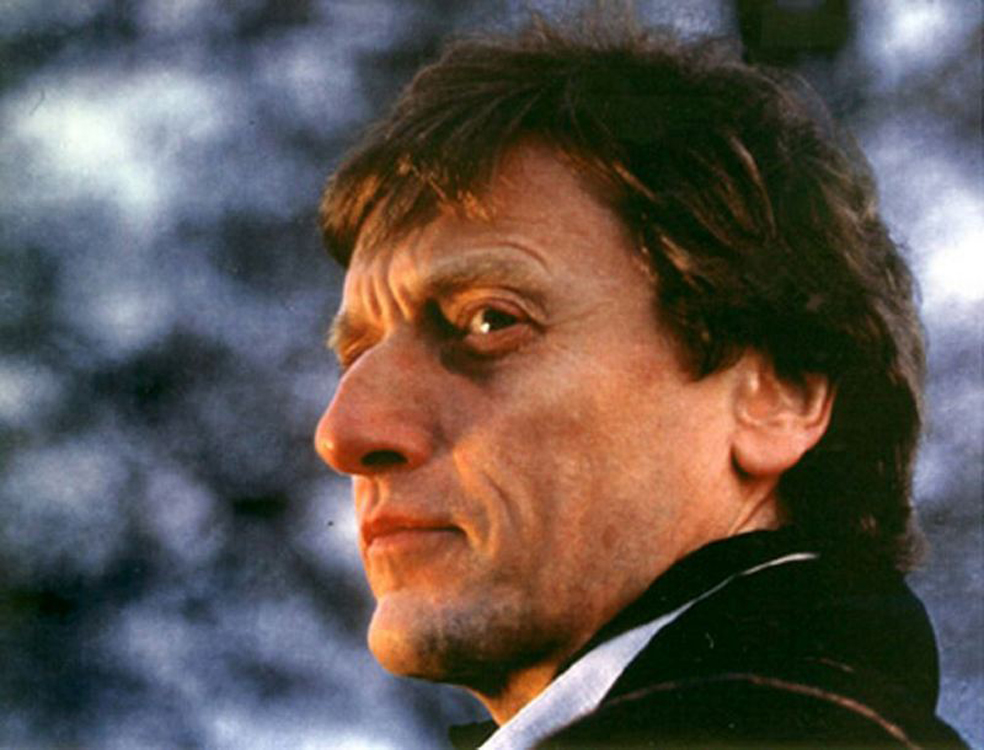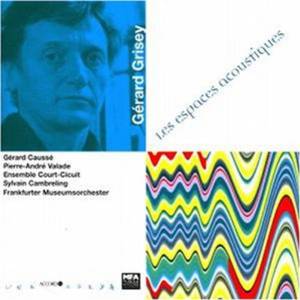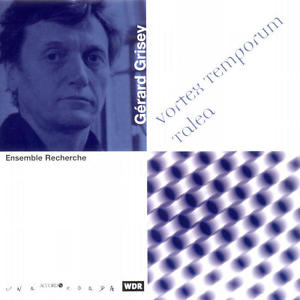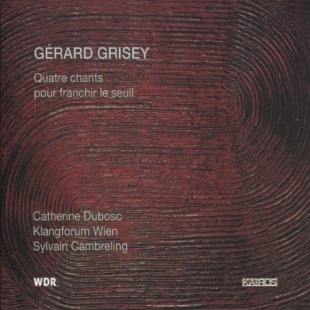A guide to Gérard Grisey's music
Gramophone
Friday, June 17, 2016
Liam Cagney pays tribute to the pioneering spectralist composer

Few composers could claim to have initiated a whole style. Debussy is one; Webern, another; Gérard Grisey – who would have been 70 this month – is a third. Grisey was the initiator of spectral music (a name invented by others), which, emerging in Paris in the 1970s, reinserted harmony to post-tonal composition on a new footing. It did so by drawing on developments in computer sound synthesis and psychoacoustics, using the harmonic spectrum – the internal, ‘microscopic’ structure of sound – as a model for ‘macroscopic’ ensemble harmonies. Grisey heralded the style in his two works Dérives (1973-74) for orchestra and amplified ensemble – which will receive its UK premiere at the Proms this summer – and Périodes (1974) for ensemble, whose mix of lush harmonies and slow-moving processes set a template others followed. Even if you haven’t heard Grisey’s music, if you’ve heard that of George Benjamin, Julian Anderson or Kaija Saariaho, you’ve heard music based on Grisey’s ideas
Grisey was raised in rural Belfort, near the West German and Swiss borders, as the only child of working-class parents. An accordion virtuoso in his teens (ranked as one of the best accordionists in the world), he also excelled at school, and his Marianist education left him with a devout Catholic faith up till his early 20s. After studies at the Hohner Academy in Trossingen, he entered the Paris Conservatoire, where he won all the main prizes, followed by a period at the Villa Medici and further studies in acoustics. Widely cultured – he spoke a few languages and was as knowledgeable about the art of the Quattrocento as about the culture of Ancient Egypt – Grisey retained from his early faith a tendency to the mystical, and he often couched his music in images of death. This culminated with the song cycle Quatre chants pout franchir le seuil (‘Four Songs for Crossing the Threshold’), commissioned and premiered by the London Sinfonietta; though at the 1999 world premiere in London, conducted by Grisey’s friend George Benjamin, Grisey was sadly absent: soon after finishing this death-focused work, he died suddenly of an aneurysm.
In his teens Grisey considered becoming a composer as nothing less than a God-given vocation. This religious element aside, it is striking, when we read his student journal entries (preserved at the Paul Sacher Foundation, where I studied them), how presciently he saw the musical style he would go on to create. Writing in 1966, the 22 year-old Grisey stated that his future music should ‘make the synthesis between the cerebral and the emotional’; avoid ‘useless vociferation and especially dryness’; ‘remain natural, above all’; ‘aim for the precision and brightness of Ravel’; and be ‘intellectual without that intellectualism being apparent’. This latter quality is key: as well as their being based on the inner ‘nature’ of sound, one of the salient qualities of Grisey’s mature works – like the masterful Vortex Temporum (1996) for Pierrot ensemble and viola – are that the listener can enjoy them without having to know about how they were composed. The music’s processes are directly perceptible; to paraphrase Debussy, the ear is the only law.
For the young Grisey – who, as a composition student of Messiaen’s in the 1960s, was thoroughly steeped in the serial methods of Boulez and Stockhausen – the post-WW2 avant-garde, its moments of brilliance notwithstanding, had ‘confused the map and the territory’: had confused, that is, the proliferation of symbolic calculations with what the listener actually heard. The result was a music of atonal ‘greyness’. How, then, Grisey asked himself, to reintroduce dynamism into this post-tonal material? Grisey found his solution – and the basis of spectral music – quite by accident. At the Darmstadt Summer Courses of 1972, Grisey attended a seminar by Stockhausen, wherein the German master proselytised about his new work Mantra, Grisey reacting with the familiar complaint that the complexity of Stockhausen’s calculations only tenuously corresponded to the heard result. However, Stockhausen also gave a seminar on Stimmung for six voices, an hour-long work based on the harmonic spectrum; and it was this seminar, along with a performance of Stimmungby the Collegium Vocale Cologne, that made a big impact on Grisey (so much so that, along with his friends Claude Vivier and Walter Boudreau, he almost got kicked off the Darmstadt tram for an impromptu rendition of the overtone music). Upon returning to Paris (and after quite possibly also attending a La Monte Young ‘Dream House’ drone installation), Grisey completed his first work in his new style, D’eau et de pierre.
The opening of Grisey’s ensemble work Partiels (1975) is emblematic of this ‘spectral’ aesthetic. Over a series of iterations, a trombone plays a long low E out of which emerges a swelling ensemble chord whose pitch content and temporal onset mimics the small-scale frequency content and transient envelope of that trombone’s low E: the result is a dazzling sonority that, with each successive iteration, adds new harmonic ‘partials’ – the compositional idea that launched a thousand imitators. But where many of those imitators got caught up in the academic business of composing ever more complicated spectral chords, often lacking is the dramatic sense Grisey possessed. This sense of dramatic spectacle in Grisey’s music has its fullest realisation in Les Espaces acoustiques (1974-85), a concert-length cycle of six works (of which Partiels is the third) that begins withPrologue, a solo for viola, and gradually grows to a full symphony orchestra in Transitoires, running the gamut of strange sonorities on the way.
In the 1980s, as Grisey’s ideas spread outside France – owing in part to his teaching at the Darmstadt Summer Courses in 1980 and 1982 – he continued to develop his style. Where early works such as Périodes are based on slow-moving processes, later works like Talea (1986) bring in a simultaneity of different temporalities: in Grisey’s image, the various time of whales, humans, and insects. The highlight of this later style is Vortex Temporum, wherein a snippet of an arpeggio from Ravel's Daphne et Chloé, alternately stretched and compressed, generates a thrilling three movement journey through the titular vortex of time. Another long-term project of Grisey's later years was to write music for solo voice. Although he had projected an opera in 1980 for the Opéra national de Paris based on D. H. Lawrence’s novella The Man Who Died, it was only in the 1990s that Grisey felt assured enough to incorporate the solo voice into his style. L'Icône paradoxale (1992-94) for soprano, mezzo and orchestra was the first fruit of this, premiered by Esa-Pekka Salonen and the Los Angeles Philharmonic, while Quatre chants pour franchir le seuil, a setting of texts about death from different civilisations, was to be Grisey's final work (a setting of Beckett was never completed). Listening to the Quatre chants’s umbral, opulent ‘Berceuse’ – ‘music for the dawn of a humanity finally freed from its nightmare’ – gives us a tantalising glimpse of the type of opera Grisey might have gone on to write.
Though he is by turns cast as the latest composer in the French coloristic tradition, or as the heir to Boulez in radically rethinking musical composition from the foundations up, perhaps what is most notable about Grisey is the humanness of his art and the seriousness of his vocation. ‘For the artist,’ he said, ‘art is not just a fabrication of products – be they avant-garde – but rather a mode of being and a putting in question.’
Recommended recordings

Les Espaces acoustiques
Gerard Caussé, Frankfurter Museumsorchester/Sylvain Cambreling, Ensemble Court-Circuit / Pierre-André Valade
Accord
Of the two versions available on disc, the Accord release of Les Espaces acoustiques benefits from Grisey’s friend Valade’s intimate knowledge of the music.

Vortex Temporum, Talea
Ensemble Recherche / Kwamé Ryan
Accord
With Vortex Temporum Grisey spanned avant-garde and mainstream: a three-movement chamber work of vertiginous depth.

Quatre chants pour franchir le seuil
Catherine Dubosc, Klangforum Wien / Sylvain Cambreling
Kairos
Grisey’s final masterpiece, an arcane, brooding, beautiful meditation on crossing the final threshold.
Grisey timeline
1965-72
Studies at the Paris Conservatoire
1974
Premieres of Dérives and Périodes, which lay out his mature style
1978
First lecture at the Darmstadt Summer Courses, telling his listeners about a new musical movement afoot in Paris
1981
First full premiere of Les Espaces acoustiques (without the closing Epilogue) at the Venice Biennale
1982
Emigrates to the United States to take up post at the University of California, Berkeley
1987
Begins teaching at the Paris Conservatoire
1997
UK premiere of Vortex Temporum at the Huddersfield Contemporary Music Festival causes a stir
1998
Dies in Paris following an aneurysm
1999
Posthumous London world premiere of Quatre chants pour franchir le seuil







